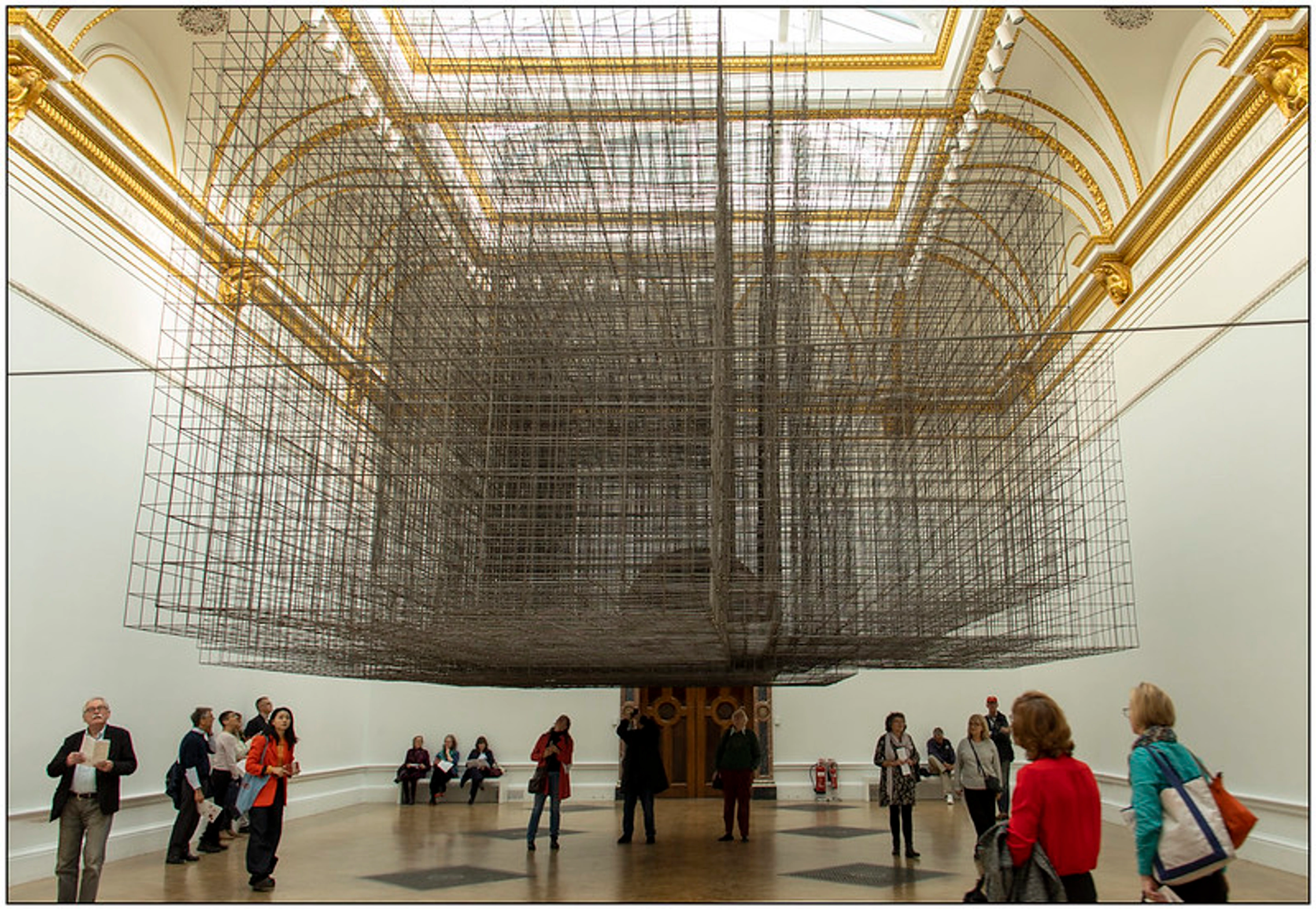
Artist's Guide: Minimalism, Intentional Living & Creative Freedom
An artist's deeply personal journey into minimalism: how intentional living transformed her creative process, decluttered her studio, and brought profound clarity. Discover practical steps, art history insights, and a path to purpose-driven art and life.
The Artist's Path to Minimalism: Cultivating Intentional Living, Art, and Inner Peace
Let's be honest, the modern world is a constant whisper, sometimes a shout, to have more. More stuff, more experiences, more followers, more… everything. I once convinced myself I needed a state-of-the-art, high-definition projector – not for actual art presentations, mind you, but "just in case" I ever decided to host an impromptu outdoor film festival for my cat. It sat in its box, a monument to an imagined future, while my studio, a colorful explosion, often mirrored my mind: a frantic carnival of half-baked ideas and lingering 'what-ifs.' 'Creative chaos!' I'd declare, but deep down, it felt more like a creative chokehold, a chaotic symphony where I, the reluctant conductor, was slowly losing my rhythm.
Then, slowly, almost accidentally, one rainy afternoon browsing documentaries about mindful living, I stumbled upon minimalism. It wasn't a sudden epiphany, more like a quiet realization blooming after years of mental noise. And no, it wasn't about throwing out everything I owned and living in a stark white box (though some days, the thought is tempting, especially when facing a pile of 'essential' art supplies!). For me, it became a radical act of intentionality, a way to cut through the noise and truly focus on what matters. It's less about having less, and more about making space for what truly matters – clarity, purpose, inner peace, and a profound connection to my art and life. This guide explores my personal journey into an uncluttered existence, how it transformed my artistic practice, and how you can begin your own path to intentional living, blending personal insights with practical steps.
My Clutter Confessions: Finding Minimalism in a Painter's Life
This deep dive into intentionality wasn't born from some sudden, dramatic revelation, but rather a slow, often uncomfortable, confrontation with my own messy reality. It was a gradual, sometimes painful, realization that all the "things" weren't serving me; in fact, they were actively hindering me.
Take my studio, for instance. For years, I hoarded every brush, every half-used tube of paint, every scrap of canvas, convinced I'd need it someday. My workbench often resembled an archaeological dig of forgotten projects and 'just in case' materials, rather than a functional space. I recall a particular series of large canvases I wanted to tackle – a bold new direction. But every time I tried to start, I'd spend an hour just trying to find a clean spot to lay out my palette, wrestling with forgotten projects and a mountain of 'essential' art books. The sheer effort of clearing space overshadowed the creative urge. It even had a peculiar scent – a stale mix of dried acrylic, turpentine, and forgotten coffee cups.

It felt like a monument to potential, a shrine to 'what ifs,' but in reality, it was a roadblock to actual creation. How could I see a clear vision for a new painting when my physical space was so muddled? The chaos wasn't confined to my studio; it bled into my home life, making it harder to decorate my home with a genuine sense of calm. The constant visual noise made my mind feel equally noisy. I realized this wasn't just about tidiness; it was profoundly about mental space and emotional bandwidth.
I began to question everything, starting with the absurd: "Do I really need this broken palette knife I haven't touched in five years? Does this half-dried tube of 'periwinkle dream' paint bring me joy, or just guilt?" I even found a specialty brush for painting miniature eyelashes on hyper-realistic portraits – a style I'd dabbled in for precisely one afternoon years ago. It was a slow, sometimes ruthless, process of letting go. But with each item removed, each corner cleared, I felt a lightness, a newfound freedom. My studio began to feel less like a storage unit and more like a sanctuary. It wasn't just my physical space that breathed easier; my mind did too. The static started to clear, making room for genuine inspiration. What cluttered corners in your life are silently stealing your creative energy?
What Minimalism Truly Means to Me: Beyond the Stereotypes
Forget the stereotypes of empty rooms and monochrome palettes – that's just one interpretation, and often a misinformed one. For me, minimalism is a deeply personal philosophy, an ongoing dance with choice. It's a conscious alignment with my core self, and it boils down to these fundamental principles, with value-driven intentionality at its heart:
- Value-Driven: This is perhaps the core for me. It's about identifying what you truly value – experiences, relationships, creativity, peace – and then rigorously organizing your life around those values. For years, I said I valued creativity, but my cluttered studio and endless to-do list screamed otherwise. Prioritizing my values meant letting go of distractions, even if they looked like opportunities, to make room for what genuinely fuels my soul. I once volunteered for every local art gallery opening committee, every 'emerging artists' networking mixer, convinced it was 'networking.' In reality, it spread me thin, leaving little energy for genuine artistic creation or deep conversations with close friends. Ruthlessly pruning those superficial commitments to make space for dedicated studio time and intimate gatherings felt like finding a hidden stream in a desert. If something doesn't support those values, it's time to let it go.
- Intentionality: For me, intentionality means every item, every commitment, every decision is made with purpose. It's about consciously choosing what to invite into your life, rather than passively letting things just accumulate. It's about saying a deliberate "yes" instead of an absentminded "maybe." For example, it meant pausing before adding another highly specialized 'must-have' synthetic brush to my collection. I'd stand there, brush in hand, thinking, "Does this genuinely offer a new capability my existing five brushes can't, or am I just buying into the promise of a magical tool that will make me a 'better' artist without the actual practice?" More often than not, the answer was the latter, and the brush stayed on the shelf.
- Freedom: Freedom from the relentless pressure of consumerism, from constant comparison, from the mental weight of managing too much. It's the freedom to focus on what truly nourishes your soul, to pursue passions without the mental and physical drag of excess. It's exhilarating. Think of the freedom to fully immerse in a painting session without the constant urge to check social media or clear another pile, feeling the light weight of responsibility.
- Clarity: A minimalist environment, whether physical or mental, drastically reduces distractions and allows for greater focus. It helps me see my art, and my life, with startling clarity. It's like turning down the background noise to hear the actual melody. Like the moment I cleared a stack of old canvases and suddenly saw the potential for a new series, unburdened by past failures, simply because the visual clutter was gone.
These core principles are the compass for my journey:
Principle | Core Idea | My Personal Application |
|---|---|---|
| Value-Driven | Aligning life with what truly matters. | Identifying my core values (creativity, relationships, peace) and structuring my time and space to prioritize them, even if it means saying 'no' to perceived opportunities. |
| Intentionality | Conscious choices, purpose-driven living. | Every purchase, commitment, and object is questioned: "Does this truly serve a purpose or add value to my life and art?" |
| Freedom | Liberation from consumerism, comparison, and excess. | The mental and physical space to pursue passions without the drag of managing too much, leading to deeper engagement in my art and life. |
| Clarity | Reduced distractions for greater focus. | Creating an environment (physical and digital) that allows my mind to quiet down, making room for innovative ideas, clear artistic vision, and a better understanding of my own needs and desires. |
These principles of intentionality, value, freedom, and clarity didn't just transform my physical space; they became the quiet, yet powerful, bedrock of my artistic practice and overall approach to life. But how does this philosophy translate into the vibrant, often complex, world of abstract art?
Minimalism in My Art: The Power of "Less is More"
Does embracing minimalism mean my art suddenly became stark and devoid of color? I get that question a lot, and it might seem counterintuitive for an abstract artist. Aren't we supposed to be about bold colors and complex compositions? Well, yes, and no. For me, minimalism isn't about absence; it's about essence. It's about distilling a message, an emotion, a visual experience down to its most impactful form. It's about finding clarity in chaos, and that philosophy deeply influences how I approach my own abstract art. There’s a profound satisfaction, almost a meditative state, that comes from stripping away the superfluous and letting the core message shine.
I remember one painting, a vibrant cityscape, where I kept adding more layers, more details, trying to capture every nuance. It felt busy, almost claustrophobic. Then, in a moment of frustration, I took a large, wet brush and began to selectively remove paint, softening edges, blending elements, until only the essential lines and color blocks remained. The result was far more powerful, a clearer expression of the city's energy, precisely because of what I took away. This isn't about sterility; it's about emotional resonance found through thoughtful reduction.
Beyond the final output, embracing minimalism has reshaped my creative process. It's about simplifying the initial ideation phase, limiting distractions in the studio, and reducing decision fatigue by having a curated selection of tools and materials. Instead of endless options, I find freedom within a focused framework.
When I'm painting, applying the principles of minimalism means:
- Deliberate Brushstrokes: Every mark has a reason, a purpose. Instead of adding more, I often pause and ask myself, "What can I take away? Is this element truly necessary to convey the feeling, or am I just adding noise, muddying the message?" It’s a constant dance between creation and subtraction, a mindful conversation with the canvas.
- Focused Color Palettes: While I deeply love vibrant colors, I often curate palettes that evoke a specific mood or message, rather than using every color on the spectrum just because I can. It's about intentional impact, not gratuitous saturation, allowing each hue to truly sing.
- Embracing Negative Space: The empty or less busy parts of a canvas are just as important as the painted areas. They allow the eye to rest, creating balance, rhythm, and emphasizing the key elements. This concept is beautifully explored in art for minimalist interiors, showing how carefully chosen voids can enhance the whole, giving breathing room to both the artwork and the viewer.
This idea of distillation to essence is beautifully embodied in the works of many artists. Historically, the Minimalist art movement of the 1960s, with artists like Donald Judd and Carl Andre, sought to reduce art to its fundamental, often geometric, forms and materials, challenging traditional notions of composition and representation. Their work emphasized the object-ness of art and the viewer's experience in space, often leading to profound, contemplative engagement through extreme simplicity.
Take Piet Mondrian, for instance, who stripped painting down to its most fundamental elements – primary colors, straight lines, and geometric forms – to create profound harmony and balance. His "Compositions" are masterclasses in how limited elements can yield immense depth, focusing the viewer on pure form and color interactions, aiming for a universal harmony, a calming order amidst the complexity of modern life.
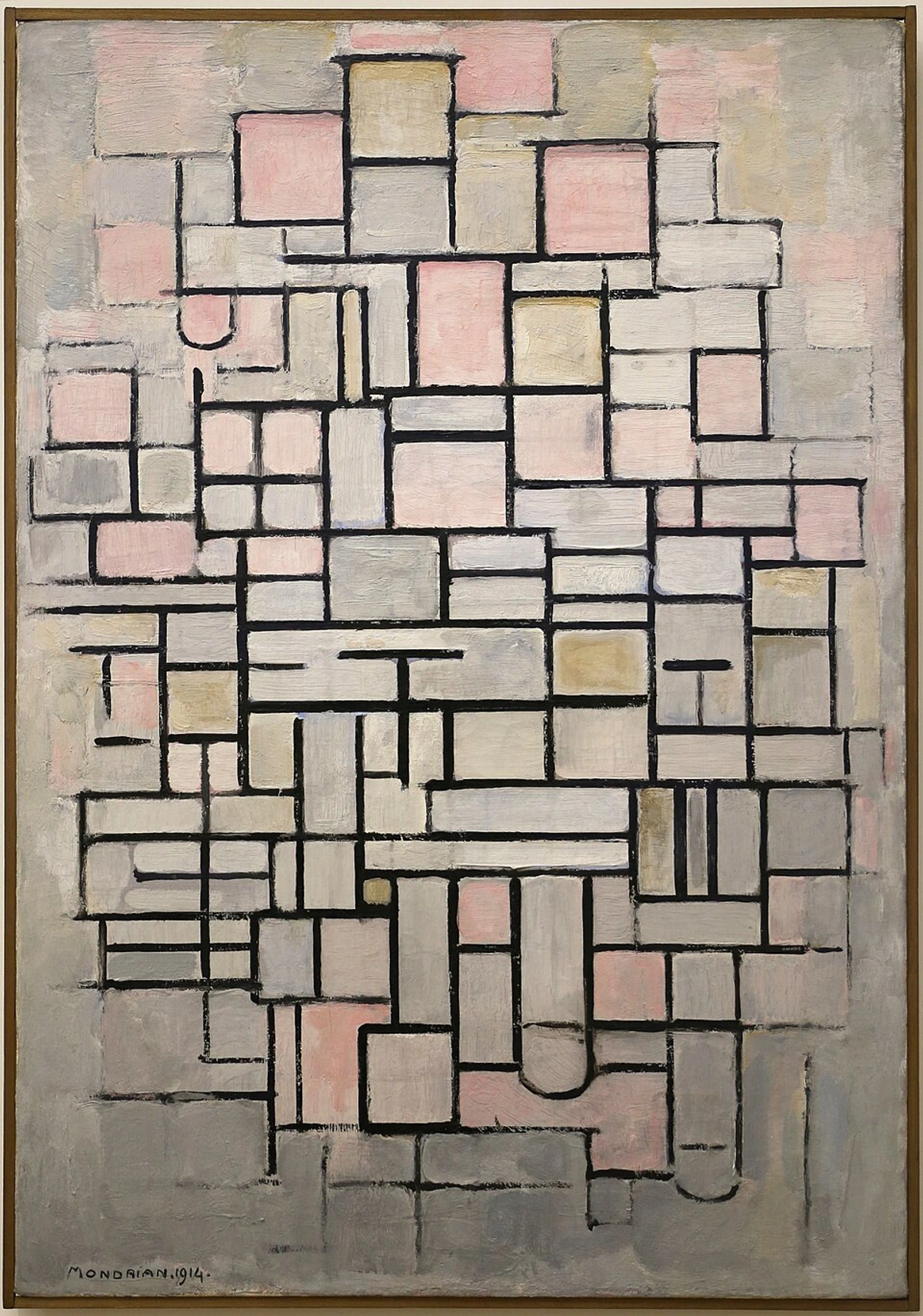
Then there's the raw, impactful work of artists like Christopher Wool, whose abstract pieces often use stark simplicity, often just text or highly reduced forms, to convey immense depth and emotion. Wool's minimalism isn't about geometric purity, but about reduction and repetition, often using stenciled words or smeared lines to strip away narrative and expose the raw power of gesture and language. His work, like Mondrian's, demonstrates how the careful selection and minimal use of elements can amplify a message, creating powerful visual statements that challenge conventional notions of complexity. You can dive deeper into his world in my ultimate guide to Christopher Wool.
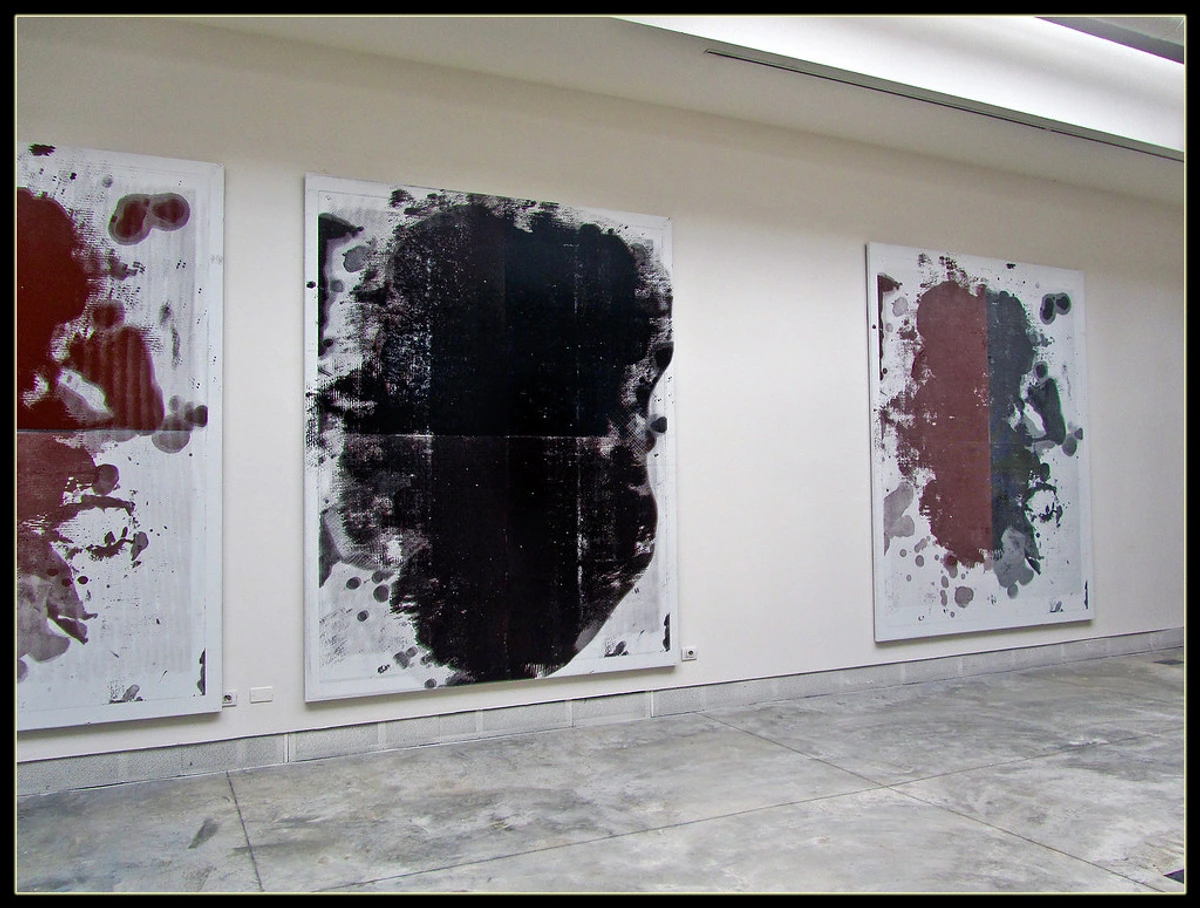
This idea of distilling to essence is also beautifully embodied in the serene, meditative grids of Agnes Martin, whose subtle works explore themes of perfection and infinity through a language of quiet lines and muted colors, inviting a deep, contemplative engagement that mirrors the peace found in an uncluttered mind. Likewise, certain aspects of Japanese ink wash painting, with its emphasis on capturing the spirit of a subject with minimal brushstrokes and vast negative space, perfectly illustrate the power of artistic minimalism across cultures, focusing on the expressive power of absence as much as presence.
This deliberate choice to simplify doesn't make the art meaningless; it amplifies its message, pushing the viewer to engage more deeply, to find meaning in non-representational works. Moreover, the principles of minimalism extend to how art is presented. A thoughtfully curated space with fewer, impactful pieces allows each artwork to command attention and resonate more deeply, enhancing both the art and the environment it inhabits.
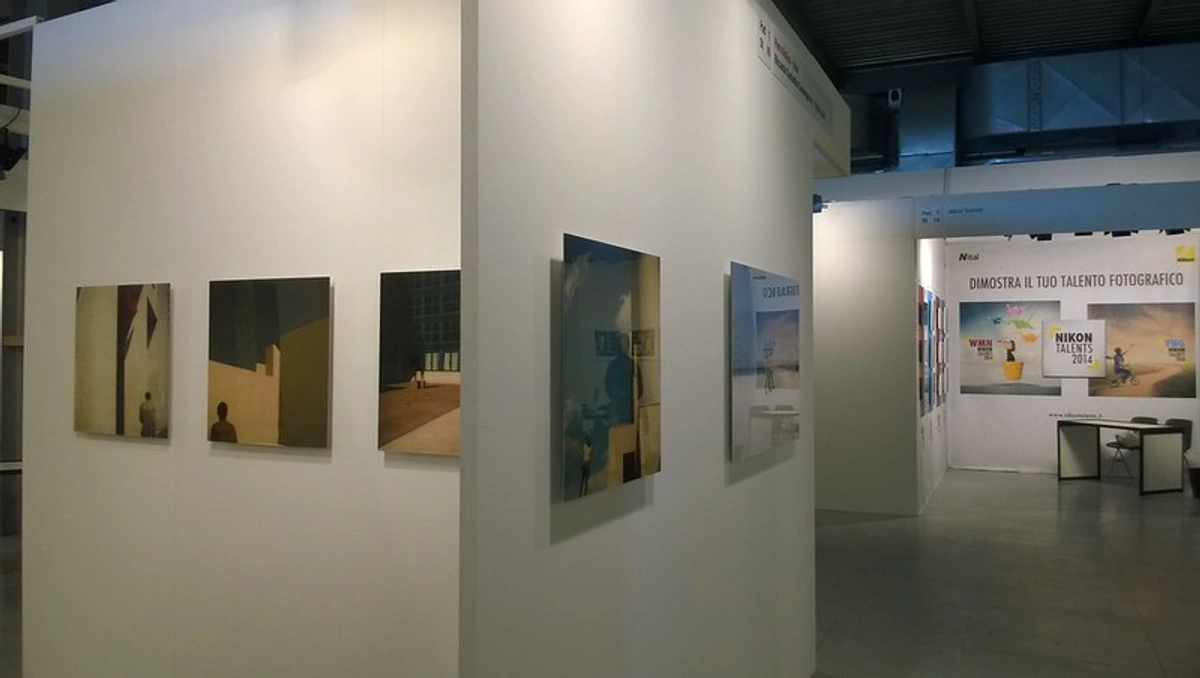
What hidden depths might your art reveal if you embraced a 'less is more' approach? If you're looking to bring this intentionality into your own space, take a look at my art for sale – each piece is crafted with this philosophy of considered impact, designed to bring clarity and focus.
Minimalism for the Artist's Business and Brand
Beyond personal and artistic practice, the principles of minimalism can profoundly shape an artist's professional presence. Just as a decluttered studio fosters clearer creation, a streamlined business approach allows your unique artistic voice to shine without unnecessary noise.
- Website & Portfolio: Consider your online portfolio. Is it showcasing your best, most cohesive work, or is it a sprawling archive of every piece you've ever created? A minimalist approach means curating your online presence to highlight your core message and strongest pieces, making it easier for gallerists, collectors, and potential clients to understand your vision. Fewer, high-impact pieces presented with elegant simplicity often speak louder than a cluttered, overwhelming display.
- Social Media: In a world saturated with digital content, a minimalist approach to social media can mean focusing on one or two platforms where your audience truly resides. It's about posting intentionally, sharing meaningful insights into your process or art, rather than chasing every trend or feeling pressured to post daily. This reduces digital overwhelm for you and creates a more authentic, focused narrative for your followers.
- Marketing & Communication: Simplify your artist statements, exhibition descriptions, and newsletters. Can you convey the essence of your work in fewer, more impactful words? A minimalist communication strategy prioritizes clarity and directness, ensuring your message resonates without getting lost in jargon or excessive detail. This often leads to more memorable and effective engagement.
By applying minimalist principles to your business, you're not just creating a cohesive brand; you're reclaiming time and energy that can be reinvested into your most important work: creating art.
How to Start Your Own Minimalist Journey (Without the Overwhelm)
Ready to dip your toes into the calming, sometimes slightly intimidating, waters of minimalism? It doesn't have to be a drastic overhaul, certainly not overnight. In fact, that's often how people get overwhelmed and give up. Here's how I suggest starting, based on my own trial and error – and trust me, there's been plenty of error, like that time I tried to declutter my entire art supplies cabinet in one go, only to end up surrounded by tubes of dried paint and a strong urge for a nap – and then finding myself inexplicably buying a new shade of blue I 'needed'.
- Find Your "Why": Before you even start decluttering, take some time for introspection. What truly makes you feel alive, purposeful, and content? Is it creativity, relationships, travel, learning? Write these core values down. To truly get to the heart of it, try these journaling prompts: 'What activities make me lose track of time?' 'When do I feel most authentic?' 'What situations drain my energy?' 'What do I want my legacy to be?' Your answers will be your compass. Or, try a "values sorting" exercise: write down 20 things you spend time or money on, then rank them in order of importance to your well-being. This will starkly reveal where your true values lie versus where your resources are actually going. Then, when you ask "Does this add value or joy?", you have a clear benchmark against which to measure. This deep self-reflection is perhaps the most powerful tool for curating your space not just physically, but spiritually.
- Start Small, Celebrate Often: Pick one drawer, one shelf, or even just your wallet. Declutter it completely. The sense of accomplishment will be your fuel for the next step. Don't try to tackle your entire house at once; that's a recipe for burnout and existential dread.
- Ask the Hard Questions: For every item, hold it and ask: "Do I truly need this? Do I actively use this? Does it genuinely add value or joy to my life?" Be ruthlessly honest. If the answer is no, it's time to let it go. This seemingly simple exercise is a game-changer.
- One In, One Out: A simple rule that makes a huge difference in preventing future clutter. When you buy something new, get rid of something similar. New shirt? Donate an old one. New book? Pass on one you've read. It keeps the flow balanced.
- Embrace Quality Over Quantity: Instead of buying five cheap things that will quickly break or lose their appeal, invest in one high-quality item that you truly love and that will last. This applies to everything from clothing to home decor to, yes, even art! It's better for your wallet, the planet, and your peace of mind.
- Practice Mindful Consumption: This is less about decluttering what you own, and more about preventing clutter from entering your life in the first place. Before every purchase, pause. Ask yourself if this item aligns with your values and needs. Do you truly need it, or is it an impulse based on clever marketing?
- Digitally Declutter for Artists: Our digital lives can be just as cluttered, distracting, and draining as our physical ones. For artists, this means not only organizing digital art files into clear, logically named folders but also ruthlessly deleting duplicate texture packs you downloaded 'just in case' five years ago, unsubscribing from email lists that don't genuinely inspire or inform, managing social media presence mindfully to avoid comparison traps, and decluttering your desktop or design software assets. Think about those hundreds of downloaded brush sets you barely touch, or the old project files clogging your cloud storage "just in case" you need to revisit them a decade from now. A clear digital space often leads to a clearer creative mind, reducing notification anxiety and digital overwhelm, freeing up bandwidth for actual creation.
What's the smallest, most manageable step you can take today towards an uncluttered life?
The Unexpected Gifts of a Minimalist Mindset
Beyond the satisfyingly clean countertops and organized closets, the greatest gifts of minimalism are often intangible, yet profoundly impactful. These are the quiet rewards that sneak up on you:
- More Time & Energy for Art: Less stuff to clean, organize, repair, and maintain means a significant reclaiming of your precious time and energy. This newfound space, both mental and physical, can be redirected towards what truly matters – hobbies, deeper relationships, personal growth, or perhaps dedicating more hours to that challenging art project you've been putting off. For me, it meant finally having the mental bandwidth to experiment with new techniques, like exploring new mediums or complex layering, something I'd always 'not had time' for.
- Reduced Stress & Anxiety: The constant mental load of decision fatigue, the nagging feeling of 'should-haves,' and the relentless pressure of consumerism slowly melt away. There's a profound peace, a deep exhale, in knowing you have everything you need and nothing you don't. It's like shedding a heavy cloak you didn't even realize you were wearing, and suddenly the air feels lighter, fresher.
- Greater Financial Freedom: Less impulse buying, more thoughtful purchases, and a reduced need to constantly upgrade means more money for experiences, robust savings, or investing in truly meaningful items that align with your values. It's amazing how much wealth gets tied up in things we barely use, or that sit gathering dust in storage.
- Environmental Harmony: Beyond personal gains, minimalism often aligns with a more sustainable lifestyle. Less impulse buying of art supplies, a focus on fewer high-quality paints and brushes, and a commitment to using materials fully naturally lead to reduced waste and a smaller environmental footprint. For me, this translates to carefully choosing non-toxic, eco-friendly paints when possible, consciously reducing solvent use through cleaning practices, and even finding creative ways to repurpose old canvases or scraps into new works. It's a quiet nod to our planet, a subtle way of saying, 'I care, and my practice reflects it.'

- Deeper Appreciation: When you intentionally curate your possessions, you tend to appreciate each one more deeply. Every object in your home feels cherished, purposeful, and tells a story. It transforms from mere stuff to treasured companion, a silent testament to your values.
- Enhanced Creativity: With less physical and mental distraction, and more precious mental space, new ideas and creative flow become significantly more accessible. It's like clearing the static on a radio to hear the music more clearly, allowing your unique artistic voice to resonate without interruption. This clarity can even extend to visiting an artist's museum like the one in 's-Hertogenbosch, where the careful curation of space around artworks often highlights their calming power and sparks new perspectives on display, sometimes even influencing my own approach to a new series by emphasizing intentional presentation.
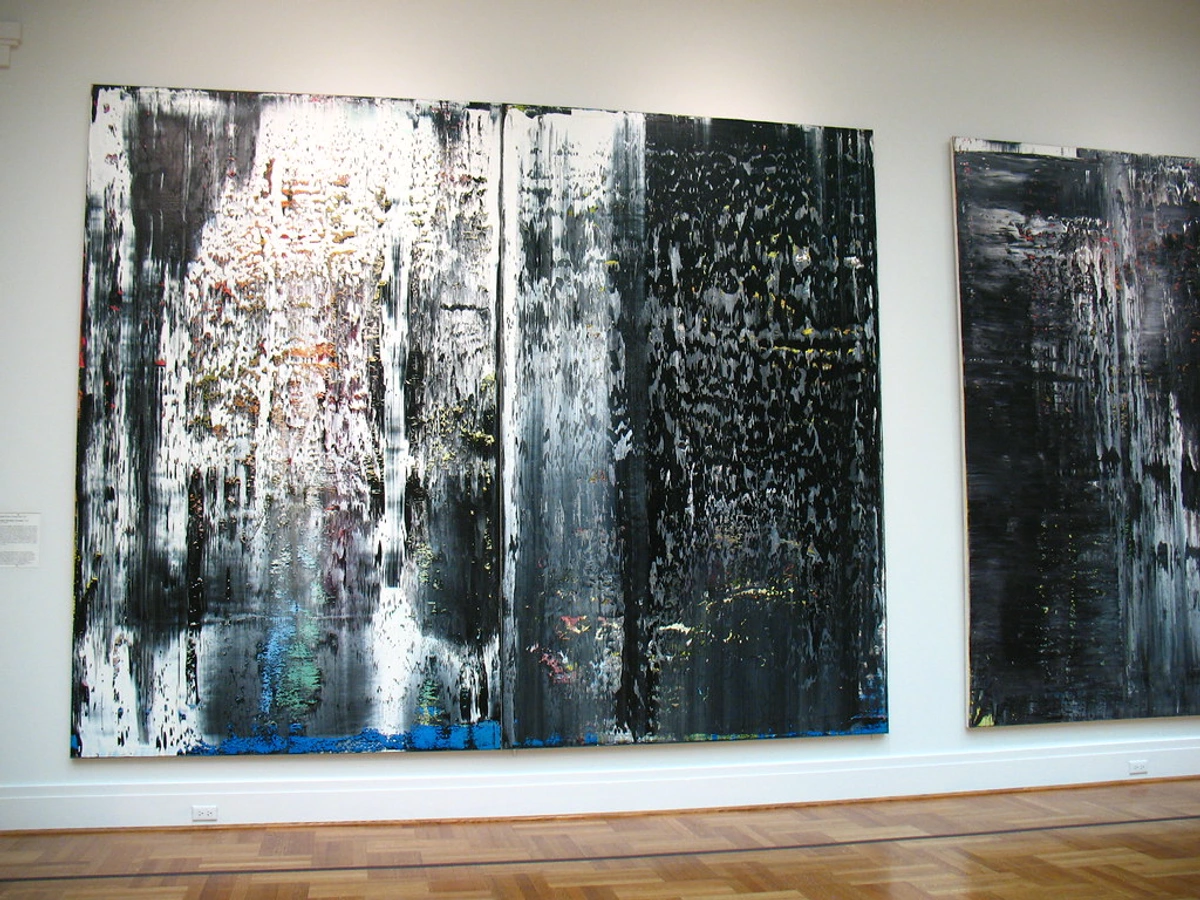
- A Balanced Perspective on Challenges: While minimalism offers immense benefits, it's not a magic bullet. There will still be moments of emotional attachment to letting go, or the occasional pull of societal pressure to consume – like that time I almost bought a 'limited edition' paint set, only to realize I already had those colors, just not in a fancy box. But with a minimalist mindset, you approach these challenges with a clearer head and a stronger sense of your own values, making them easier to navigate, and even to laugh about later.
Which of these gifts calls to you most strongly right now?
Frequently Asked Questions About Minimalism for Artists
Q: Is minimalism about being poor or living with nothing?
A: Absolutely not! This is one of the biggest misconceptions. Minimalism is about intentionality and value, not deprivation. It's about curating a life rich in what matters most to you, which very often means freeing up resources (time, money, energy) that were previously tied up in excess possessions. It's about abundance of purpose, not absence of things, allowing you to invest more deeply in what truly matters.
Q: Do I have to get rid of all my sentimental items and art supplies?
A: This is a perfectly understandable concern for any artist! The answer is a definitive no. Minimalism encourages you to thoughtfully consider what truly holds sentimental value and brings you genuine joy and meaning. Instead of holding onto everything, you might try a "sentimental item audit": pick your top 5-10 most cherished items, or designate a special display area for them. For old art supplies, you might repurpose them, create a "memory box" for items with significant personal history, or take photos of old sketchbooks before passing them on. The goal is to make conscious choices that honor your memories and artistic journey without letting them become a burden of excess, not mindless purging or sacrificing cherished connections.
Q: Can I still have art in a minimalist home? Isn't that a contradiction?
A: A resounding, enthusiastic yes! Art plays a crucial, even elevated, role in a minimalist home. It often serves as a focal point, injecting personality, emotion, and visual interest into a refined space. The key is to choose pieces thoughtfully – perhaps a few impactful abstract pieces that resonate deeply and add to the home's serenity, rather than a cluttered gallery wall. It's about intentional curation of your collection, ensuring each piece is given space to breathe and truly shine.
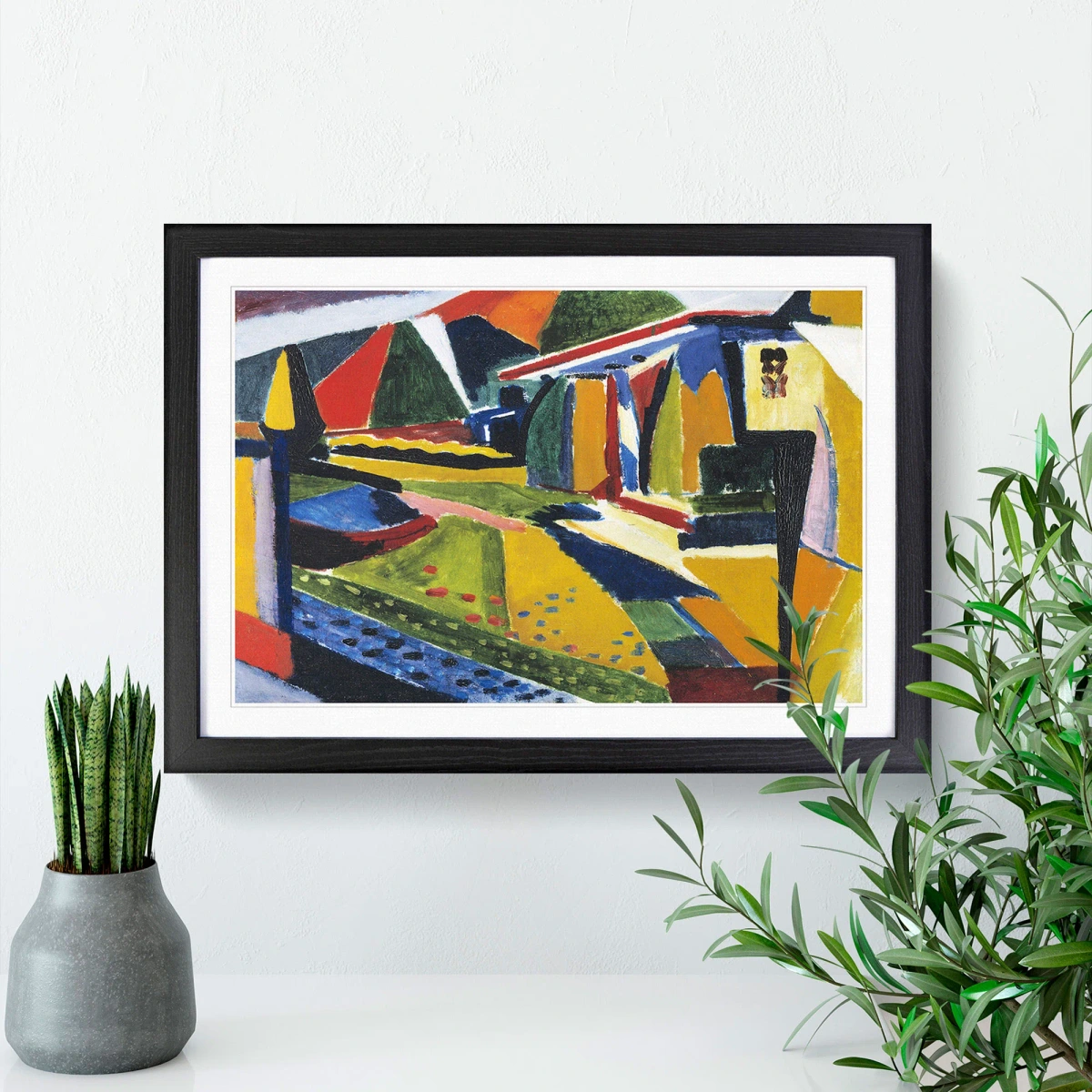
Q: How does minimalism apply to creative hobbies or collections beyond painting?
A: Minimalism's principles extend beautifully to any creative pursuit or collection. For hobbies like sculpture or photography, it's about curating your tools and materials to only those you genuinely use and love, freeing up space and mental energy for the act of creation. Instead of having dozens of lenses or rolls of obscure wire, you might focus on a select few high-quality items that truly serve your vision. For collections (be it books, records, pottery, or indeed, art itself), it means focusing on items that bring deep joy, inspire you, or hold significant meaning, rather than accumulating for accumulation's sake. It's about valuing the quality and purpose of your collection over its sheer size, ensuring each piece you choose to live with genuinely resonates.
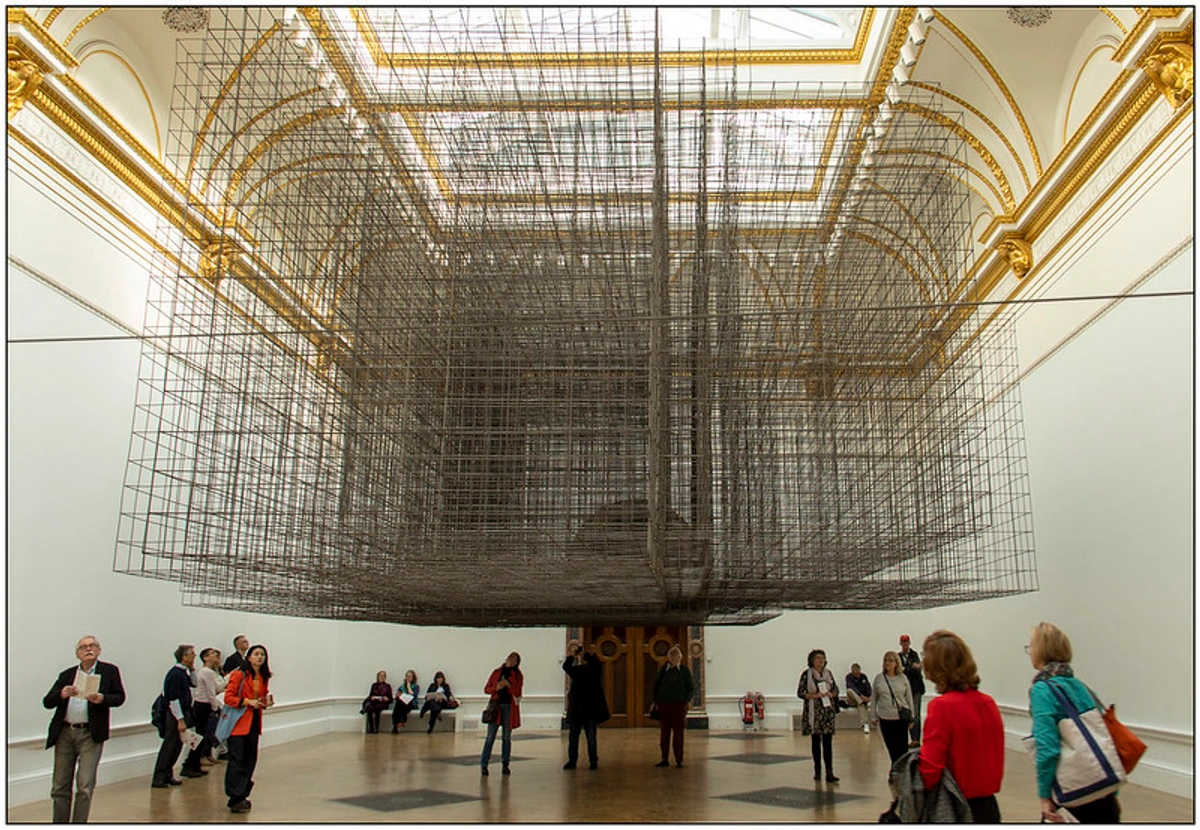
Q: How does minimalism apply to the process of creating art?
A: Beyond the physical studio, minimalism deeply influences the creative process itself. It means simplifying your initial ideation by focusing on core concepts, limiting distractions during your actual work sessions, and reducing decision fatigue by curating a focused selection of tools and materials. Instead of being overwhelmed by endless options, you find freedom and depth within a more focused framework, allowing the essence of your creative vision to emerge unhindered. This often leads to more profound, less cluttered artistic expressions.
Q: Isn't minimalism a bit cold or sterile? My home and art are full of warmth and color!
A: This is a common and understandable concern, but it's a misconception I love to challenge! For me, and for many others, minimalism is about curating what brings you joy and purpose, which absolutely includes warmth, color, and personality. It's not about achieving a sterile, empty aesthetic, but about removing the superfluous to highlight the meaningful. My own art is often vibrant and abstract, and my minimalist approach allows those colors and forms to sing even louder because they aren't competing with visual clutter. Think of it as creating a carefully composed symphony where every instrument is heard, rather than a cacophony. It's about more life, not less.
Q: How long does it take to become a minimalist?
A: Minimalism isn't a destination you arrive at; it's an ongoing journey and a continuous mindset shift. Some people make rapid, dramatic changes, while for others, it's a gradual evolution that unfolds over months or even years. There's no right or wrong timeline, just progress and continuous refinement, much like an artist's evolving style. My own artist's timeline certainly shows how much my perspective has shifted and evolved over time, proving it's less about a finish line and more about the ever-unfolding path toward a more intentional life.
Embracing the Uncluttered Life
My journey into minimalism has been one of the most transformative decisions of my life, both personally and artistically. It's taught me the profound beauty of simplicity, the quiet power of choice, and the immense peace that comes from living a life truly aligned with your truest values. It's not a rigid set of rules, but an ongoing process, a continuous refinement, much like an artist working on a piece – adding, subtracting, refining until the essence shines through. It consistently rewards with clarity, freedom, and a deeper, more resonant connection to the creative spirit, allowing my artistic voice to truly resonate.
So, if you're feeling overwhelmed, drowning in distractions, or just seeking a bit more peace and purpose in your beautifully chaotic world, I wholeheartedly encourage you to take that first small, intentional step towards an uncluttered life. You might just discover a richer, more vibrant, and profoundly authentic existence waiting beneath the surface, ready to be uncovered, much like revealing the true potential of a canvas. What small, intentional step will you take today?




